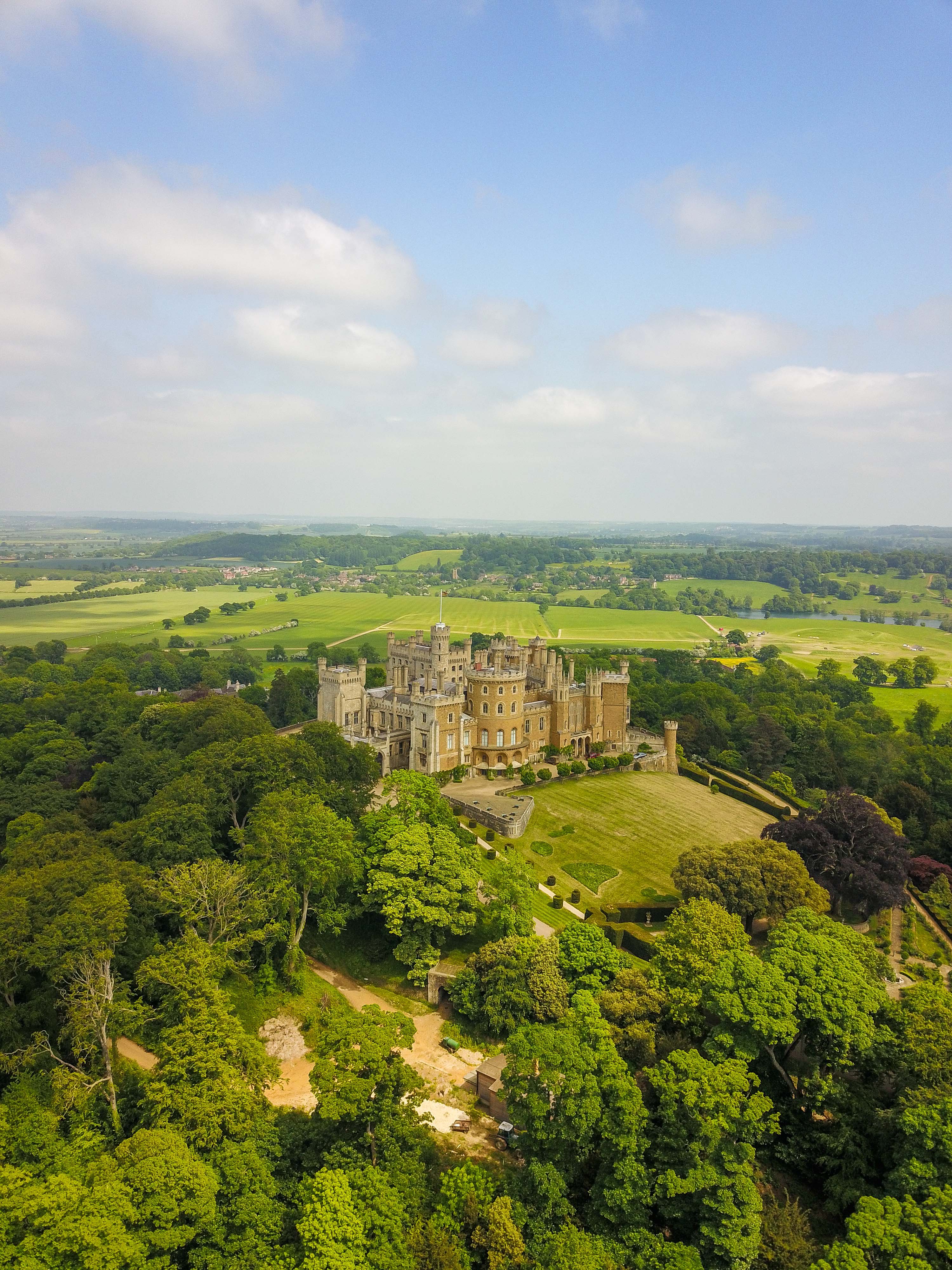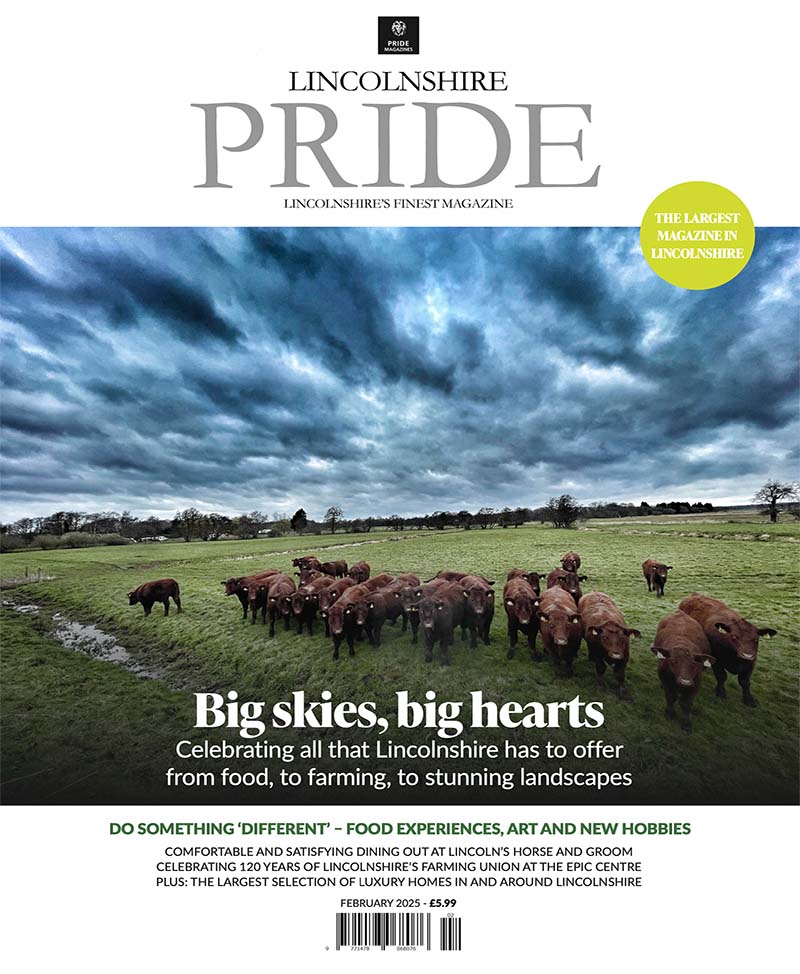
Castles from the Skies in and around Lincolnshire
The county is known for one in particular but it’s actually home to several others too that are too often overlooked. The history of Lincolnshire dates back to the stone age – a few early Neolithic settlements have been identified in including a hollow at Dragonby, pottery and flint at Great Ponton, and pottery found in a later barrow at Walesby – so there’s no wonder why we have an abundance of ancient architecture throughout the county.
Throughout this feature, we’ve the history of each castle, even some of the lost ones, and some incredible drone shots of Lincolnshire Castles from the skies…
Lincoln Castle
A focus on castles in the county would not be complete without discussing Lincoln Castle. By Norman times, Lincoln was the third city of the realm in prosperity and importance. The city even had its own mint for making coins. In 1068, two years after the Battle of Hastings, William the Conqueror began building Lincoln Castle on a site occupied since Roman times. One of the first structures on the site was the Lucy Tower motte and its bailey, to which another motte and stone walls were added early in the 12th century.
These would have dominated the skyline along with the nearby Cathedral. For 900 years the castle has been used as a court and prison. The coffin like pews in the chapel were to remind prisoners of their fate and to ensure that they could not see each other. Many prisoners were deported to Australia and others executed on the ramparts. Visiting Lincoln Castle today, you will be able to see the an original of the famous scripture the Magna Carta, a document that completely changed this country’s history.
There is also the Medieval Wall Walk which is a 360º walk and a complete circuit of the castle walls, with audio tour and dungeons to explore. Finally, a visit to Lincoln Castle would not be complete without visiting the Victorian Prison. Experience the hope and hardship of the prisoners in Lincoln. (01522 554559, www.lincolncastle.com)

Tattershall Castle
Tattershall is a magnificent 15th century red brick castle in Tattershall south of Woodhall Spa. Rising from the flat Lincolnshire fens, Tattershall Castle, with its Gothic fireplaces and church-like windows, was designed to impress. In 1231 Robert de Tateshale received a licence from King Henry III to build a crenelated manor house at Tattershall. His castle consisted of a great hall, kitchens, gatehouse and a chapel defended by a curtain wall and a single moat.
In the 15th century the Castle was passed to Ralph, 3rd Baron Cromwell. In 1433 Lord Cromwell upgraded his small, crumbling ancestral seat into an opulent home designed on a palatial scale. The inner moat enlarged and an outer moat added. In 1643 a big part of the Castle was destroyed or damaged during the Civil War.
The Royalists, led by the Earl of Newcastle who was sweeping across Lincolnshire, attacked the castle and left only the Great Tower intact. After the Kings defeat Parliament ordered the demolition of the entire castle. The Earl of Lincoln appealed to Parliament to leave the Great Tower intact and due to his repeated pleas the demolition order was overlooked. The castle became abandoned and derelict in the 19th century, and was to be exported to America, but Lord Curzon of Kedleston bought it and saved it.
In his will, he left the property to the National Trust. The rescue efforts of this Lincolnshire landmark prompted the first piece of buildings conservation legislation in the world; shaping the future by protecting the past. The 1913 Ancient Monuments Consolidation and Amendment Act forms the basis of our heritage protection laws that helps charities like the National Trust to conserve buildings, places and spaces for ever, for everyone. It’s a fabulously romantic story and a beautiful place to visit commanding far reaching views across Lincolnshire. (01526 342543, www.nationaltrust.org.uk/tattershall-castle).
Bolingbroke Castle
Bolingbroke Castle was one of three castles built by Ranulf de Blundeville, Earl of Chester and Lincoln, in the 1220s after his return from the Crusades. After his death, the castle remained in the ownership of the Earls of Lincoln and was later inherited through marriage by John of Gaunt, Duke of Lancaster. An extremely powerful member of the royal court, John of Gaunt became guardian of Richard II when the young king succeeded to the throne at the age of 10. John of Gaunt and his first wife, Blanche, lived at the castle during the 1360s.
Their son, Henry of Bolingbroke, was born there in 1367. Henry had a tempestuous relationship with Richard II and was exiled in 1397. He returned to England after the death of his father in 1399, enraged that the king had seized the estates he had inherited. These events marked the end of Richard II’s reign. Henry of Bolingbroke claimed the throne from his unpopular rival, and Richard imprisoned. Soon afterwards, Henry was crowned king as Henry IV.
Unfortunately, during the Civil War, the castle became a defensible base for a Royalist garrison and was besieged by Parliamentarian forces in 1643. The Royalists surrendered that winter, and the entire castle was destroyed. The castle is managed by English Heritage and although it’s now in ruin, it’s beautiful in the way that nature has taken over, making it part of the natural landscape. (01529 461499, www.english-heritage.org.uk).

Grimsthorpe Castle
Each section of this castle in Bourne has a different appearance, reflecting the different architectural styles that have been employed there since building began in the 13th century. Once inside you’re able to see the vast collection of paintings, furniture and tapestries. Thrones and furnishings from the House of Lords are also available to view. Grimsthorpe Castle has been in the Willoughby de Eresby family for 500 years and remains in the family today.
It was granted by Henry VIII to William, Baron Willoughby de Eresby on the occasion of his marriage to the lady-in-waiting to Katherine of Aragon, in 1516. The oldest part of the castle, King John’s Tower, was built in the early 13th century. It is the main front which gives the castle its grandeur. The gardens have been designed by Lancelot ‘Capability’ Brown. During the First World War Grimsthorpe Park was used by the Royal Flying Corps and Royal Air Force as an emergency landing ground.
During the Second World War the central part of the park was used as a bombing range. In 1944 the castle housed a company of the Parachute Regiment while it was recovering from operations. You should visit Grimsthorpe at least once if not for its history and tapestries but for its extensive and beautiful grounds. (01778 591205, www.grimsthorpe.co.uk)

Newark Castle
Newark Castle was founded in the mid 12th century by Alexander, Bishop of Lincoln. Originally a timber castle, it was rebuilt in stone towards the end of the century. Newark Castle and Gardens are formal gardens bordered by the remaining walls of Newark Castle which was partly destroyed in 1646 at the end of the English Civil War.
The Castle has stood proudly on the banks of the River Trent for nearly 900 years. The most famous event in the castle’s long history came in 1216, when King John died here, after consuming the infamous ‘surfeit of peaches.’ Tradition suggests that the king died in the south-west tower, but it is more likely that he was staying in an apartment within the grand gatehouse that dominates the site today. Due to the Civil War following King John’s death, the destruction of the castle meant that only one and a half sides of the castle still stand.
It’s enough however to give an idea of how impressive the original fortress must have been. The west front, facing onto the river, is what is left to view today. (01636 650000, www.newark-sherwooddc.gov.uk)

Belvoir Castle
Belvoir Castle is the ancestral home of the Dukes of Rutland. The family have lived at Belvoir in an unbroken line for almost a thousand years. The land was a gift from William the Conqueror to one of his Norman barons – Robert de Todeni who fought for him at the Battle of Hastings in 1066. The castle is now in its fourth incarnation with wars taking a toll on its architecture. The castle you see today was built in the 1800s. The first was a Norman royal castle that eventually was left in ruins until the Earl of Rutland, started the construction of a new castle in 1528.
This second incarnation of Belvoir Castle is what held the story of the witches of Belvoir; three castle servants that were accused of the murder of the Earl’s two young sons. During the English Civil War, it was one of the more notable strongholds of the king’s supporters and King Charles spent a night here on his way into Lincolnshire.
However, the parliamentarians destroyed it in 1649 and a new home started to be built six years later for the 9th Earl of Rutland. The Castle cost £11,730 to build which is equivalent to around £1,850,000 in today’s rates. The Earl was made a Duke in this third castle, and the castle has been the seat of the Dukes of Rutland for three centuries. Unfortunately, the Castle was nearly entirely destroyed in a fire in 1816 which cost around £8,430,000 in today’s rates, and included paintings by Van Dyck, Titian and Rubens.
It was rebuilt for £6,990,000 in today’s rates much to the style of the third Belvoir Castle, incorporating styles of medieval castles, reminiscent of Windsor Castle and this was completed in 1832. This is what you see today. (01476 871001, www.belvoircastle.com)







